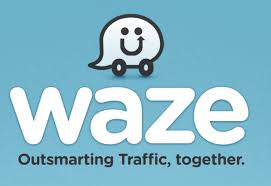Waze, or how to crowd-source your way

From a modest Israeli start-up to one of the highest valuation during its acquisition by Google, Waze embodies the success of crowdsourcing ventures, and allows for a much cheaper method of data collection than that used by major corporations – like Waze’s new mother company, Google.
On June 11th, 2013, Google completed the acquisition of Waze for a reported 1.3 billion USD. The unanimously praised, awarded “Best overall mobile app” start-up at the 2013 Mobile World Congress has been able to reach a valuation many digital app start ups would love to reach. How did this Israeli, VC funded start-up manage to rank among the highest rated apps of its generation?
The story of Waze traces back to 2006, when Ehud Shabtai founded “Freemap Israel” as a community project, with the objective to create by the community users a free digital database of the map of Israel, and “to ensure its free content, update and distribution, for non-commercial usage, as convenient as possible” (source: Freemap Israel). The project changed its name into “Waze” in 2009 when it became a for-profit company, and planned to monetize through location-based advertising and to expand into Asia.
Waze is a GPS navigation software which is community-driven in the sense that it gathers map data and traffic information from its users. It learns from its users’ driving times to provide routing and real-time traffic updates. Users can enrich the map by reporting accidents, policemen localization, traffic jams, and, from the online map editor, can update roads and other symbolic places. This crowdsourcing method allows the users community to enrich and edit the map, report errors, and simply use the map while driving.
Waze is free of use and at the time of Google acquisition, there were 50 million users worldwide. Part of the reason of this success comes from the fact that by having so many “editors” worldwide, Waze offers the most accurate data among all GPS navigation software, hence the fact the users are both contributing to the accuracy of the system and benefiting from it makes it a very attractive product. The other part of the success is the fact Waze uses gaming conventions to encourage users to participate: frequent users get points, which improves their status. The Waze icon representing the user on the GPS changes of morphology as the user’s status evolves: from a Waze baby to a crown-wearing Waze royalty.
Throughout its existence, Waze has been improving its monetization model. Since November 2012, it offers resellers and advertisers a web interface to publish advertisements based on location. Technically, small icons will pop-up at a given location on the map allowing a potentially interested user to engage with the ads. It also offers a web interface for TV news stations to broadcast current traffic reports and alerts directly from the Waze app. It also takes advantage of punctual business opportunities, like the Tour de France for example, where Waze introduced a global localization system that announces future road closures and real-time traffic updates.
As of today, in spite of the fact the growth potential of Waze business seems obvious – as of today it is only used in 13 countries, leaving a lot of room for growth, especially in Asian markets where the app is not yet fully established-, Waze is nonetheless facing three main challenges. First of all, several road-safety advocates have raised the safety issue: the main criticism comes from the fact the map contains too many icons and notification, which may distract the driver. This is especially the case for users on older phones, like the Iphone 5, where the screen is much smaller than newer phones. Secondly, one could question the morality of an app encouraging signaling the presence of police forces on the road, hence encouraging drives to avoid them in order to not respect speed limits or other traffic rules. Finally, at the time of writing this blog, Waze is currently facing a judicial procedure from one of its competitors, PhantomAlert, over data theft and IP infringement, which may have been done by Waze in order to boost up its value at the time of the acquisition by Google.
Nonetheless, the acquisition of Waze by Google gives the latter two key advantages: first of all, the ability to maintain Google’s own maps in real time – which is ironic, considering Google spent billions of dollars using its street view cars around the world to maps roads, something Waze has been able to do simply by collecting the GPS data of its 50 million users. The second advantage is the integration of Waze’s work on understanding its users, which allows the software to show localization-related ads to its users. No one explains it better than Noam Bardin, Waze CEO: “Now that I know where you drive, I can begin offering you deals, I can begin enhancing the experience… If the goal is monetization, it doesn’t work. (…) Just like search became the interface for monetization on the web, maps are going to be a big part of the monetization engine for mobile, (…) because that’s what you open when you’re going places.”



This is certainly an idea which has benefitted tremendously from the power of the crowds and the indirect network effects that strengthen the platform. I see Waze as an enabler to Google Maps and its autonomous car efforts.
Interesting post! I liked your assessment of the challenges Waze is currently facing and the advantages it has from being owned by a large parent company like Google. I am an active Waze and Google Maps user and have noticed increased integration of Waze data into Google Maps (e.g. accident and construction reporting, etc.). I wonder if going forward, Waze will continue to be a standalone app, and how Google will manage these two arguably competing apps.